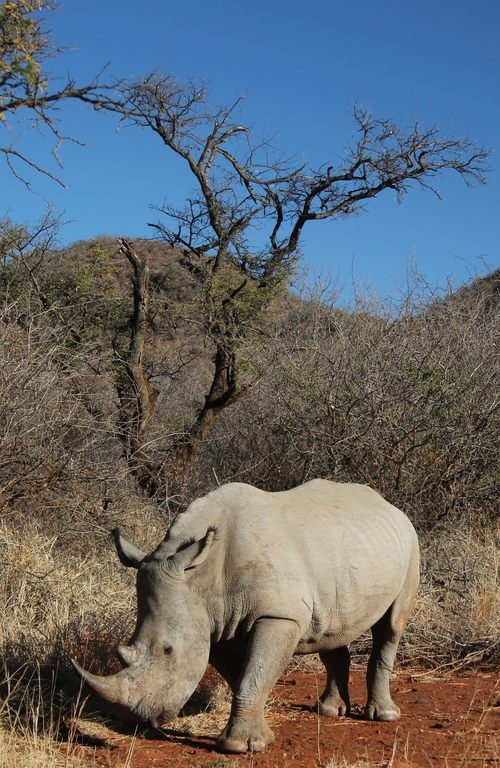White rhinoceros
A species of White rhino, Also known as White rhino Scientific name : Ceratotherium simum Genus : White rhino
White rhinoceros, A species of White rhino
Also known as:
White rhino
Scientific name: Ceratotherium simum
Genus: White rhino
Content
Description General Info
 Photo By Derek Keats , used under CC-BY-2.0 /Cropped and compressed from original
Photo By Derek Keats , used under CC-BY-2.0 /Cropped and compressed from original Description
The white rhinoceros is the largest of the five living species of rhinoceros. By mean body mass, the white rhinoceros falls behind only the three extant species of elephant as the largest land animal and terrestrial mammal alive today. It weighs slightly more on average than a hippopotamus despite a considerable mass overlap between these two species. It has a massive body and large head, a short neck and broad chest. The head and body length is 3.7 to 4.5 m (12.1 to 14.8 ft) in males and 3.4 to 3.65 m (11.2 to 12.0 ft) in females, with the tail adding another 70 cm (28 in) and the shoulder height is 170 to 186 cm (5.58 to 6.10 ft) in the male and 160 to 177 cm (5.25 to 5.81 ft) in the female. The male, averaging about 2,300 kg (5,070 lb) is heavier than the female, at an average of about 1,700 kg (3,750 lb). The largest size the species can attain is not definitively known; specimens of up to 3,600 kg (7,940 lb) are considered reliable, while larger sizes up to 4,500 kg (9,920 lb) have been claimed but are not verified. On its snout it has two horn-like growths, one behind the other. These are made of solid keratin, in which they differ from the horns of bovids (cattle and their relatives), which are keratin with a bony core, and deer antlers, which are solid bone. The front horn is larger and averages 60 cm (24 in) in length, reaching as much as 150 cm (59 in) but only in females. The white rhinoceros also has a noticeable hump on the back of its neck. Each of the four stumpy feet has three toes. The color of the body ranges from yellowish brown to slate grey. Its only hair is the ear fringes and tail bristles. White rhinos have a distinctive broad, straight mouth which is used for grazing. Its ears can move independently to pick up sounds, but it depends most of all on its sense of smell. The olfactory passages that are responsible for smell are larger than their entire brain. The white rhinoceros has the widest set of nostrils of any land-based animal. 
General Info
Lifespan
40-50 years
Diet
White rhinoceros primarily consumes grasses, which constitute about 90% of its diet. It also eats leaves, branches, and fruits occasionally. This species uses its square-lip to efficiently graze on low-grown grasses.
Appearance
White rhinoceros is characterized by its massive body, reaching lengths of more than 3.5 meters and weights up to 2,500 kg. It has thick, grey-colored skin which forms peculiar folds and cracks, resembling body armor. Distinctively, it exhibits a squared upper lip and two long, pointed horns at the front of its head. The longer front horn can reach an impressive 150 cm. While both genders grow horns, they are often longer and thicker in the males.
Behavior
White rhinoceros, a grazer species, often forage in grasslands, both during day and night. They exhibit a semi-social lifestyle, predominantly solitary, but occasionally gathering in small groups. Territorial disputes happen through horn clashing and are typically non-lethal. White rhinoceros's unique wide lip aids in efficient grazing.
Population
Decreasing
Scientific Classification
Phylum
Chordates Class
Mammals Order
Odd-toed hoofed mammals Family
Rhinoceroses Genus
White rhino Species
White rhinoceros